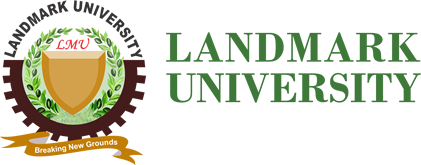TITLE OF PUBLICATION: EFFECT OF VARIETAL AND TILLAGE METHODS ON AGRONOMIC AND YIELD CHARACTERS OF RICE (ORYZA SATIVA L)
JOURNAL: International Journal of Civil Engineering and Technology
VOLUME: 9 ISSUE: 13
AUTHOR: Professor Aremu C. O.
What is it about?
The research investigated the effect of rice varietal and tillage methods on the agronomic and yield characteristics of rice under Fadama plantation. The research identified appropriate field technology that will enhance rice production processes.
Why is it important?
Rice is world’s most accepted food grain across ages. In Nigeria, upland and lowland rice cultivars are popular. Lowland rice production is limited to fadama areas. Lack of engagement of appropriate tillage methods has placed a strong limit on rice yield in some nations of Africa especially Nigeria. Noting Africa’s’ population index, boosting rice production especially in under-developed nations of the world will be one of such directions in contributing to the sustainable development goals of United Nations. This research identified three field tillage methods including:
- No- tillage (flat field)
- Shanti hydropower (China made model DF-121) and
- Shawa eco-rice farming technology (serif).
On the interaction, the three rice varieties of faro 52, Faro 44 and Omu-Aran local performed significantly and different from one another using the tillage methods across the 2 years planting periods. However, Shanti hydropower and Serif farming technology did not differ in performance with respect to rice yield and other dependent traits. This implies that agronomists may consider either of the two machine in terms of cost benefit while agricultural engineers would consider precision/automation of the attached tillage implements on each of the machine so as to maximize their respective effect for high rice yield and thereby addressing the high hunger index in Nigeria and other nations of Africa.
Perspectives- How have you benefited from the research?
The research identified tillage as most appropriate in enhancing lowland rice yield. Result obtained is a tool to help agronomist in appreciating the significant effect of the tillage practice and varietal performance on rice grain yield. Better still, use of hydropower or Serif technology provides planting platform for farmers to engage in subsequent seasons without attracting further cost of production (agronomy).
After this Research, what next?
Interdisciplinary engagement is on-going. This involves agricultural engineers, agronomists and Soil microbiologists. This team will explore the use of more rice varieties and the above machine to further identify and situate the performance on all side for rice production enhancement. Again, the first research focused only on lowland rice varieties, the next level is including upland rice varieties.
Abstract?
This work investigates the effect of rice varietal and tillage methods on the agronomic and yield characteristics of rice under fadama plantation. This is vital in order to quantify technology engagement and rice yield towards enhanced rice sector revolution in the nation’s Zero Hunger Developmental Plan (ZHDp). The experimental layout involved three varieties of rice (Faro 52, Faro 44, and Local) and three field preparation techniques (no-tillage flat (A), tillage with shanti hydropower (China made model DF-121) (B) and tillage Sawah eco-technology rice farming (serif) (Indonesia made QUICK G1000 BOXER) (C) During the rice developmental stages, data collected focused on rice varietal and power tiller effect on days to flowering, days to maturity, days of tillers, panicle length, plant height and grain yield. Data collected where analyzed using descriptive statistics and Mimitab 17 package to investigate the interaction effect as well as show details on the agronomic relationship and yield data with tillage methods. The result also provided information on the interaction effect of the varieties and the tillage method as well as identifying the resultant yields from each of the three tillage method used. The analyzed field output is a pointer in identifying the best tillage method that could enhance rice revolution in reducing and/or eliminating the current hunger index table posing treats to food availability and sustainability in under-developed nations in Africa.
Article DOI:
Article URL: http://www.iaeme.com/ijciet/issues.asp?JType=IJCIET&VType=9&IType=13
Article LMU Repository Link:
Lead Author Researchgate Link: https://www.researchgate.net/profile/Aremu_Charity
Lead Author Scopus Link: https://www.scopus.com/authid/detail.uri?authorId=16229633400
Lead Author Linkedln Link: https://www.linkedin.com/in/aremu-charity-10499a108/
Lead Author Facebook Link: https://www.facebook.com/public/Aremu-Charity

